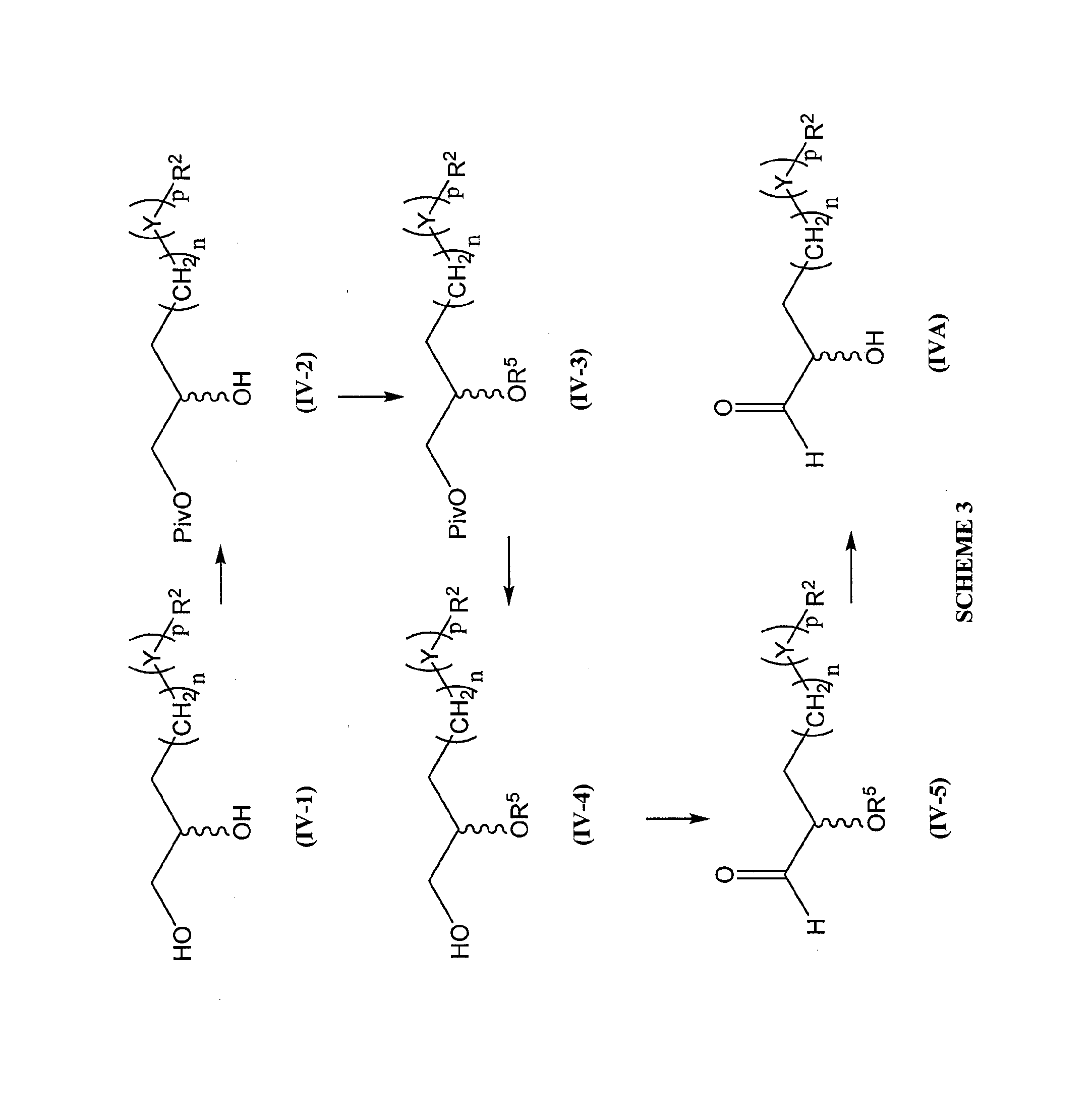Process for preparation of prostaglandin f2 alpha analogues
a technology of prostaglandin and analogues, applied in the field of process for preparation of prostaglandin f2 analogues, can solve the problems of non-stereoselective reduction of the 15-keto function, unfavorable environmental protection, and irreversible vision loss
- Summary
- Abstract
- Description
- Claims
- Application Information
AI Technical Summary
Benefits of technology
Problems solved by technology
Method used
Image
Examples
example 1
Synthesis of (15R)-(+)-1a travoprost and its (1S)-(+)-(1b) epimer
(R)-(−)-2,2-Dimethyl-4-(toluenesulfonyloxymethyl)-1,3-dioxolane (20a)
[0221]p-Toluenesulfonyl chloride (6.18 g, 31.748 mmol) was added portionwise over a period of 10 min to a solution of (S)-(+)-2,2-dimethyl-4-(hydroxymethyl)-1,3-dioxolane (19a) (4.00 g, 30.236 mmol) in anhydrous pyridine (50.0 ml) in an ice bath. The resulting solution was slowly brought to room temperature and stirred overnight. During that time, a white precipitate formed. The pyridine was removed under reduced pressure and the residue was diluted with ethyl acetate (50 ml), washed subsequently with cold aqueous 1M HCl (2×150 ml), saturated NaHCO3 (100 ml) and brine (200 ml). The organic layer was dried over Na2SO4, filtered and concentrated to give a light yellow oil. The crude product was purified by column chromatography over silica gel with gradient elution 10-30% ethyl acetate / hexanes to afford (R)-(−)-3-tosyloxy-1,2-propanediol acetonide 20a (...
example 2
Synthesis of (3S)-(+)-7a bimatoprost and its (3R)-(+)-(7b) epimer
(R)-(−)-4-phenylbutane-1,2-diyl bis(4-nitrobenzoate) (21a)
[0264]DIAD (4.70 ml, 23.118 mmol) was added dropwise to a stirred solution of diol (S)-(−)-20a (1.50 g, 9.247 mmol), p-nitrobenzoic acid (3.90 g, 23.118 mmol) and PPh3 (6.12 g, 23.118 mmol) in anhydrous toluene (50 ml) at 0° C. under an argon atmosphere. After stirring for 2 h at room temperature, TLC analysis (hexanes / AcOEt 4:1) indicated the reaction was complete. The excess of toluene (20 ml) was evaporated and the residue was put into refrigerator for several hours. Triphenylphosphine oxide was removed by filtration on a Büchner funnel and washed with cold toluene (3×15 ml). The filtrate and washings were combined and concentrated under reduced pressure to give the crude product (4.39 g) as an orange-yellow solid. Crystallization from a mixture of hexanes / AcOEt (1:1) afforded the pure diester (R)-(−)-21a (3.81 g, 88.7% yield) as a light yellow crystals. [α]D...
PUM
| Property | Measurement | Unit |
|---|---|---|
| enantiomeric excess | aaaaa | aaaaa |
| optical configuration | aaaaa | aaaaa |
| morphology | aaaaa | aaaaa |
Abstract
Description
Claims
Application Information
 Login to View More
Login to View More - R&D
- Intellectual Property
- Life Sciences
- Materials
- Tech Scout
- Unparalleled Data Quality
- Higher Quality Content
- 60% Fewer Hallucinations
Browse by: Latest US Patents, China's latest patents, Technical Efficacy Thesaurus, Application Domain, Technology Topic, Popular Technical Reports.
© 2025 PatSnap. All rights reserved.Legal|Privacy policy|Modern Slavery Act Transparency Statement|Sitemap|About US| Contact US: help@patsnap.com



